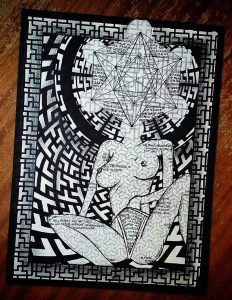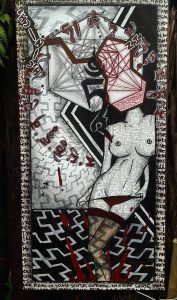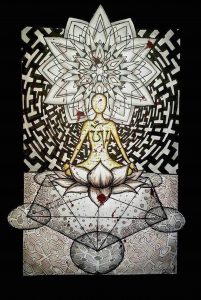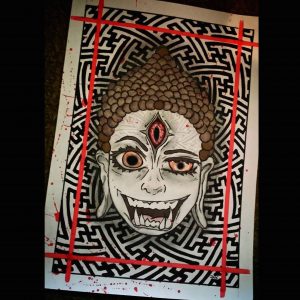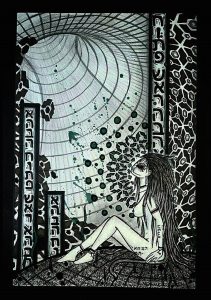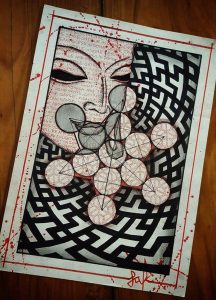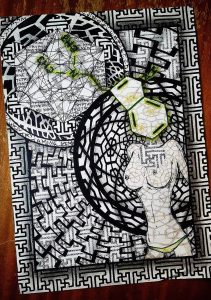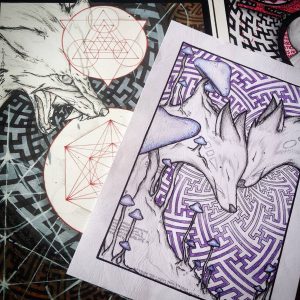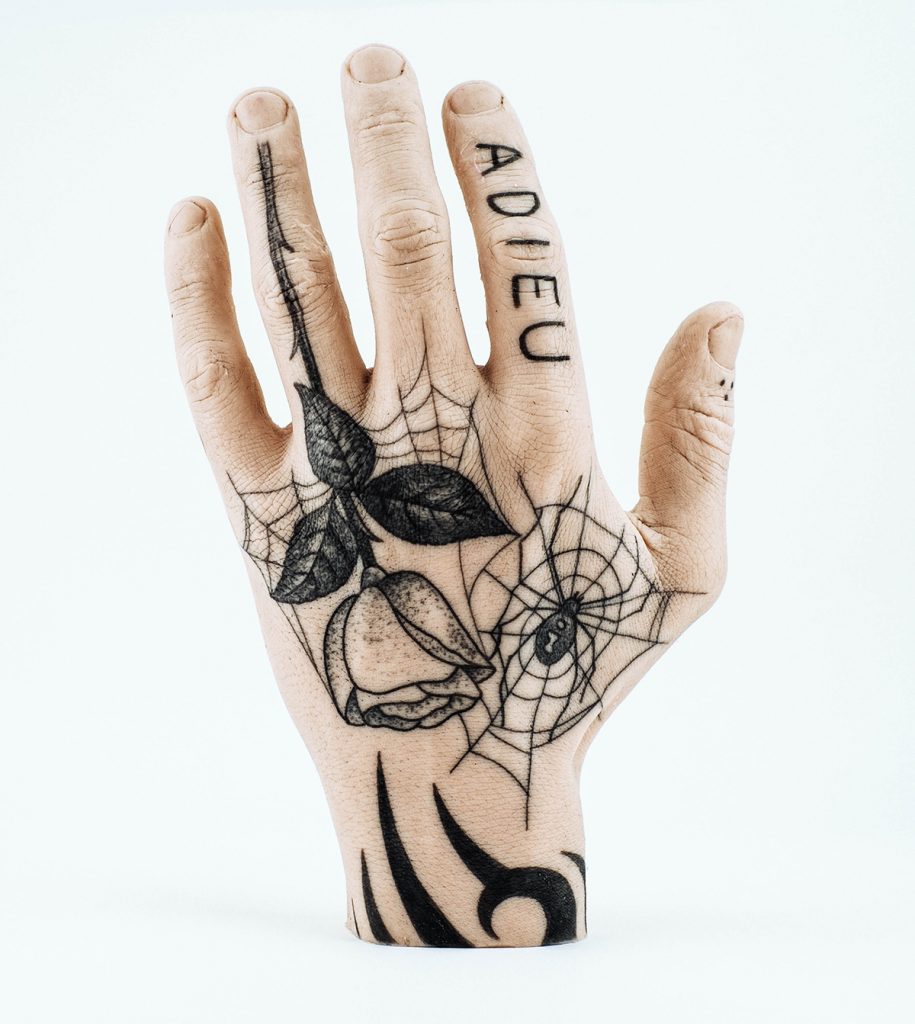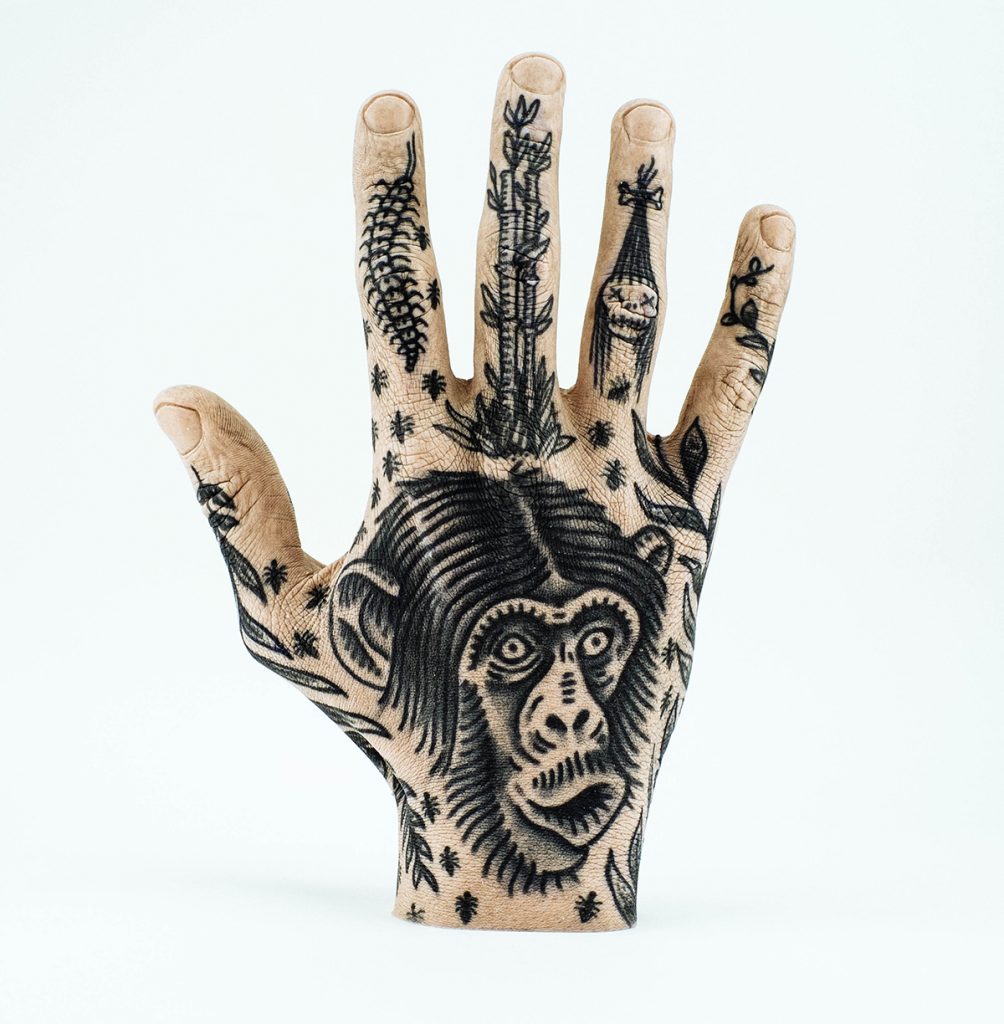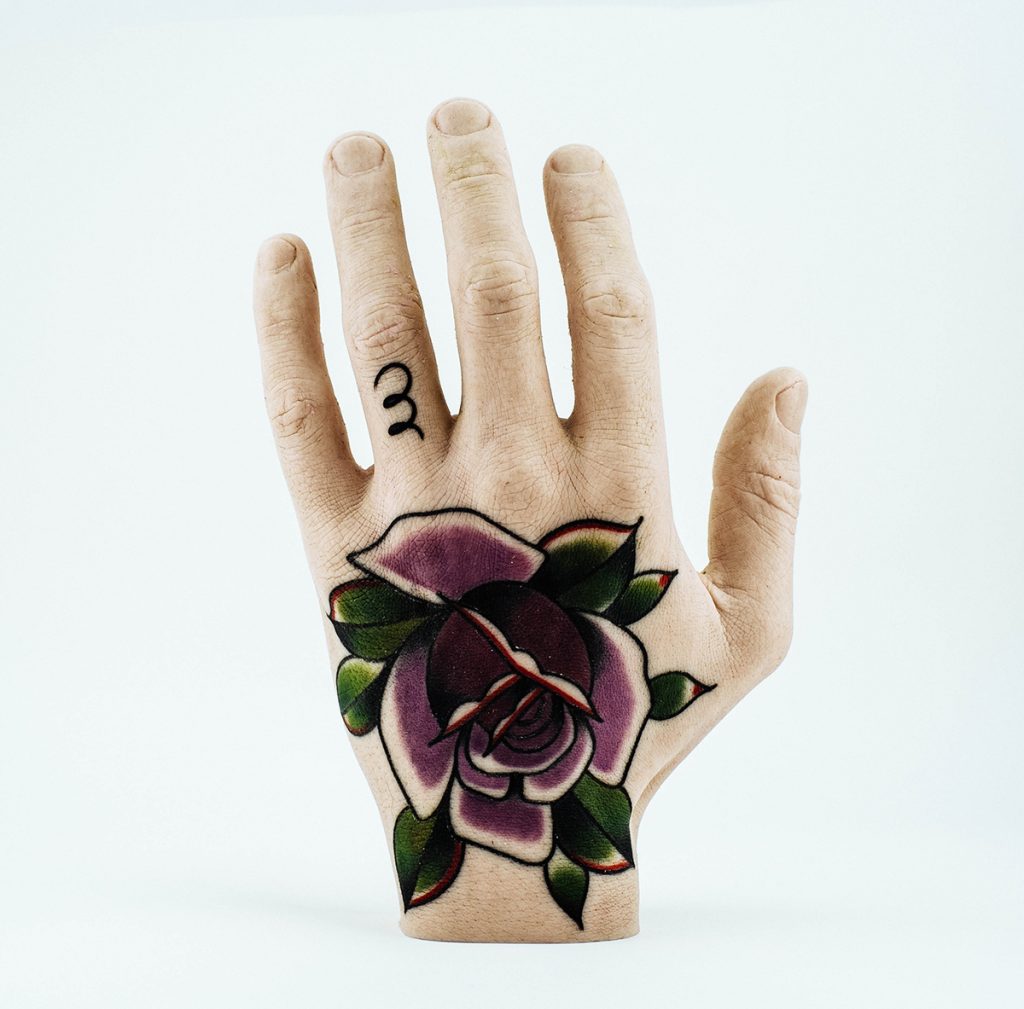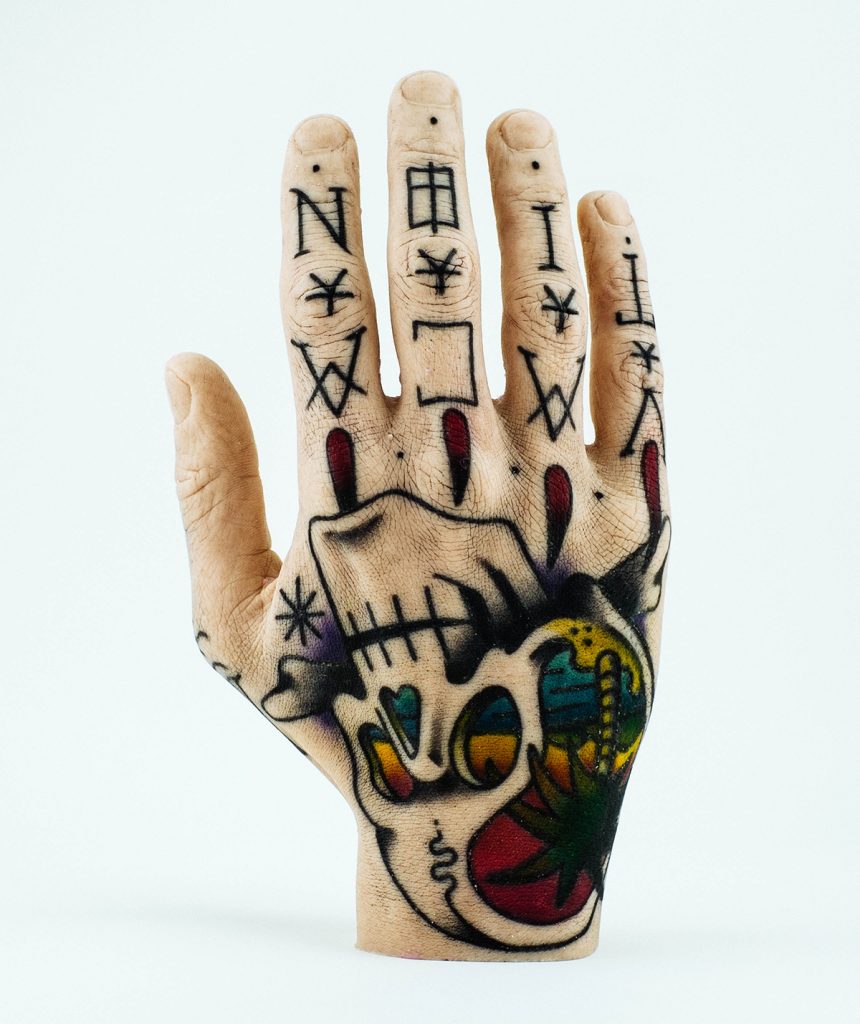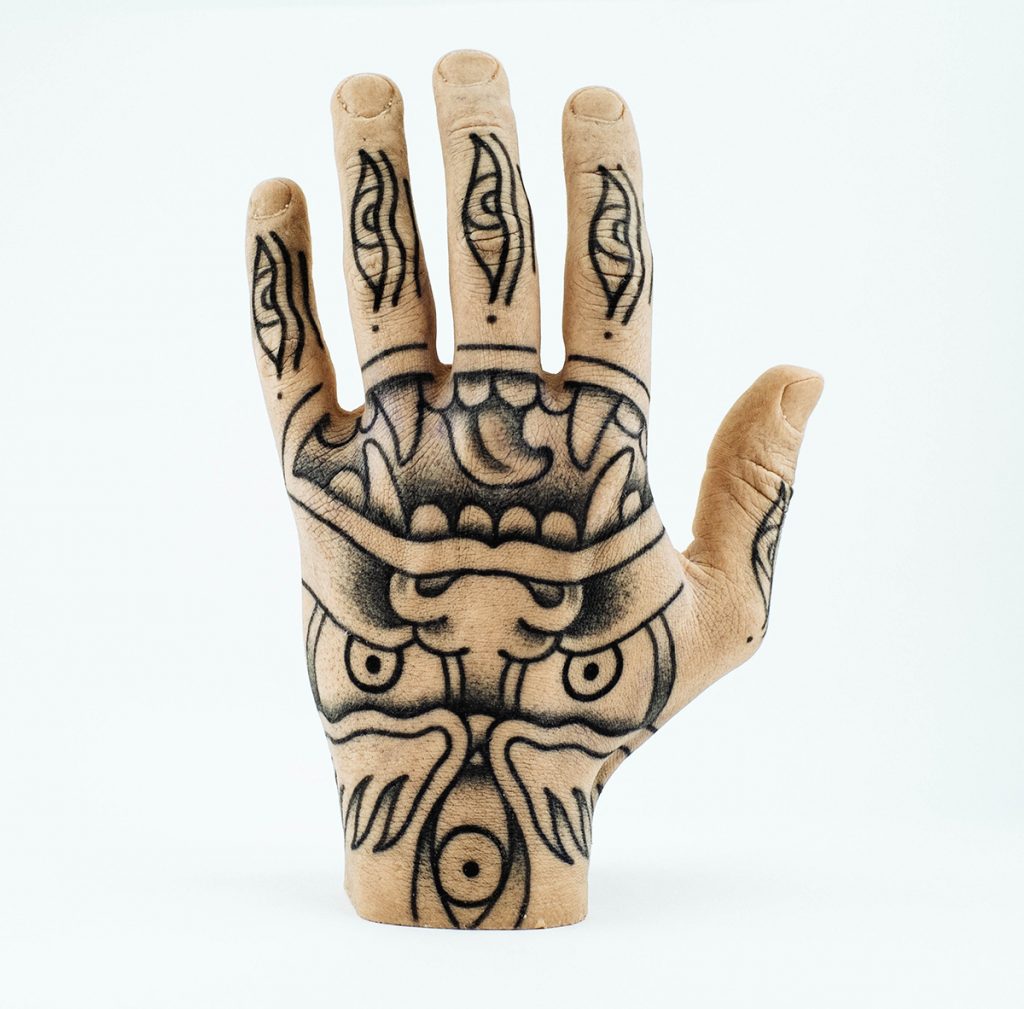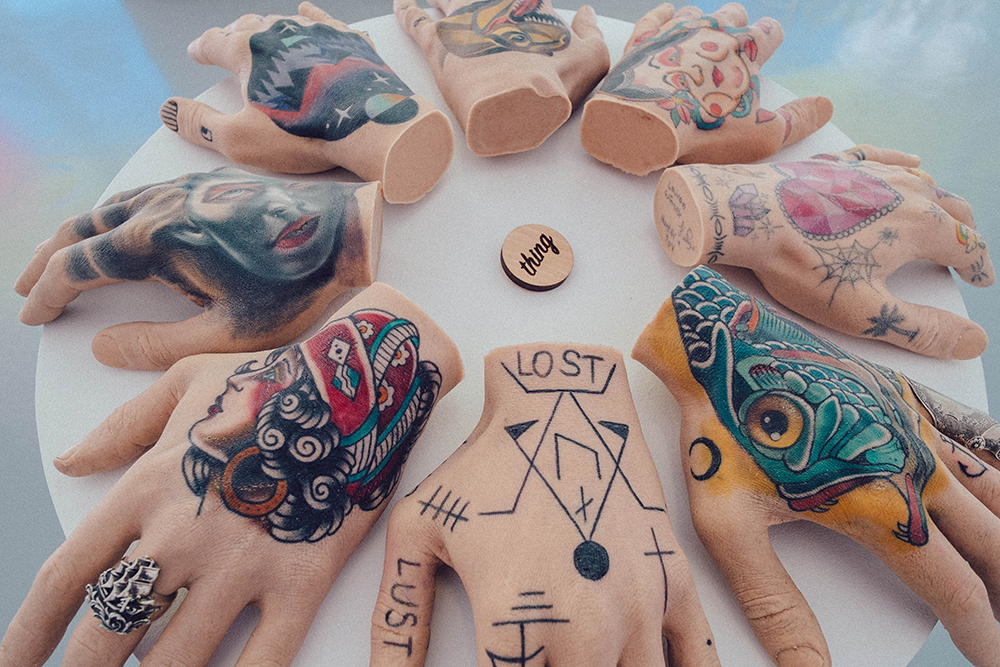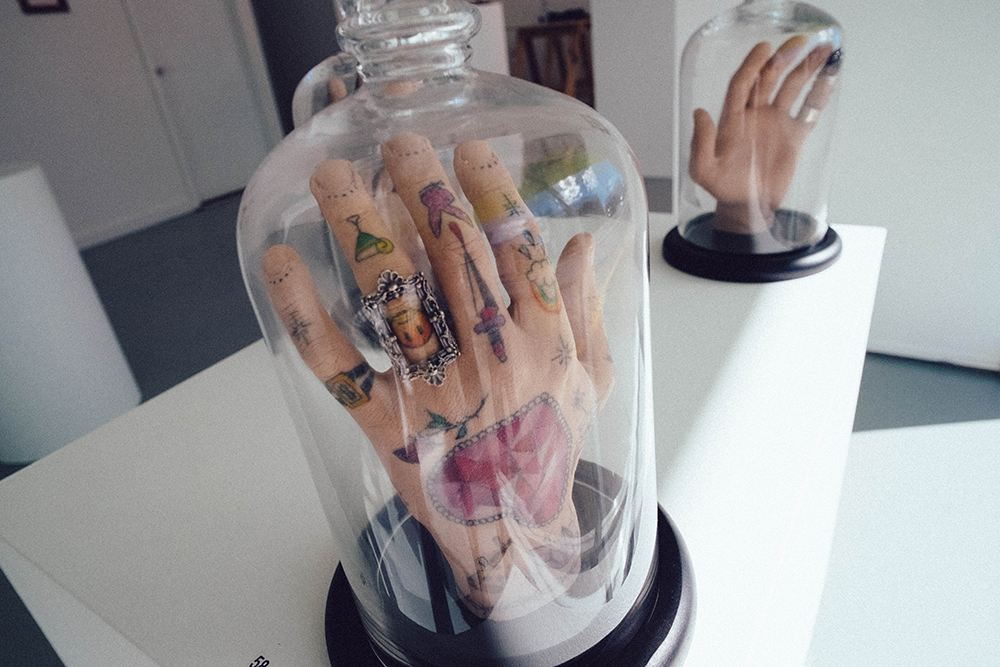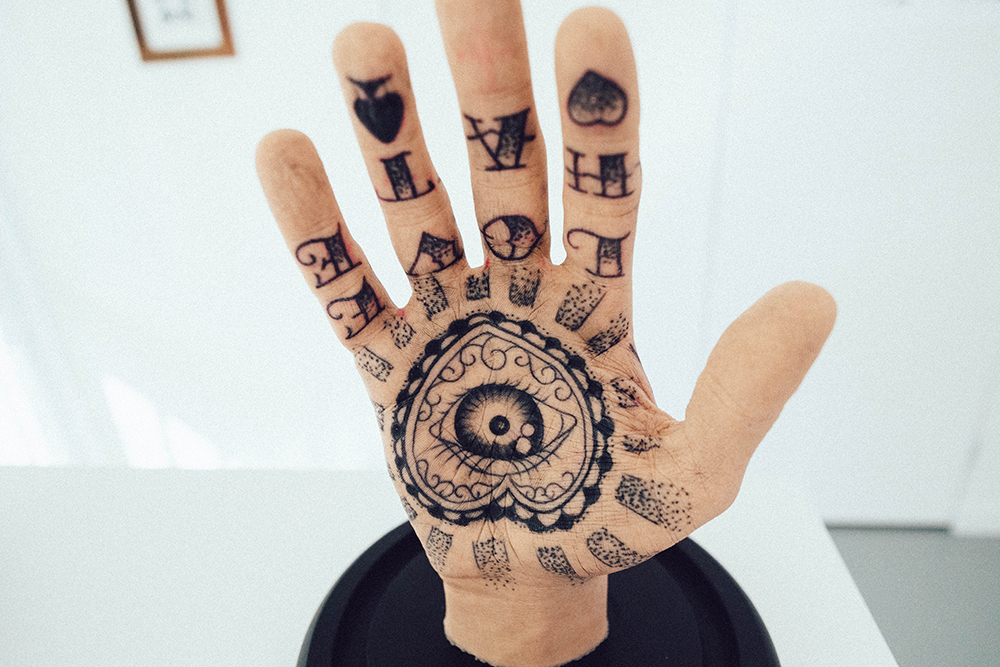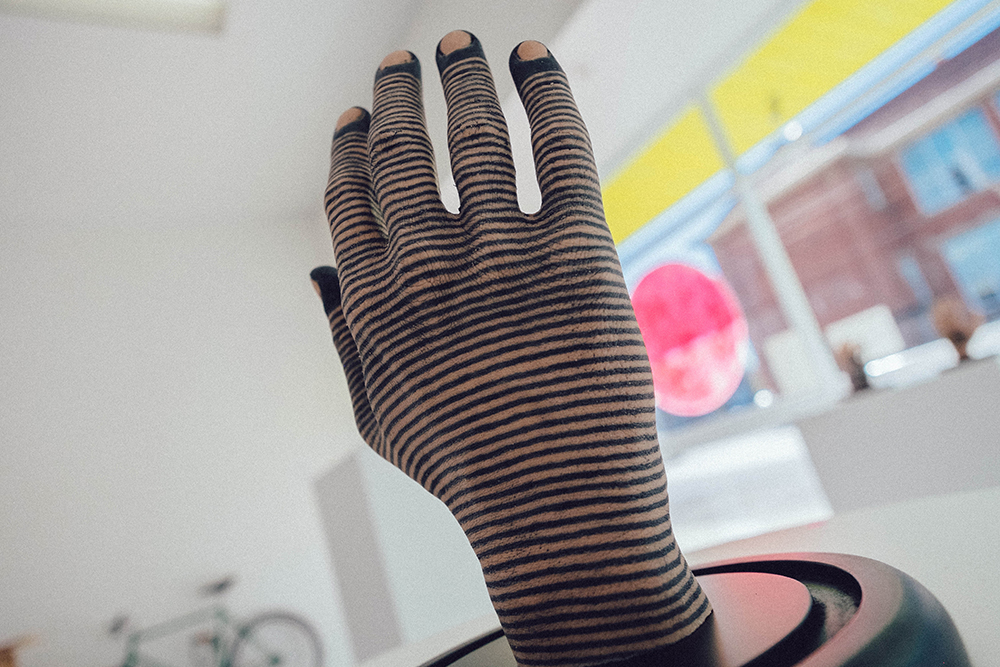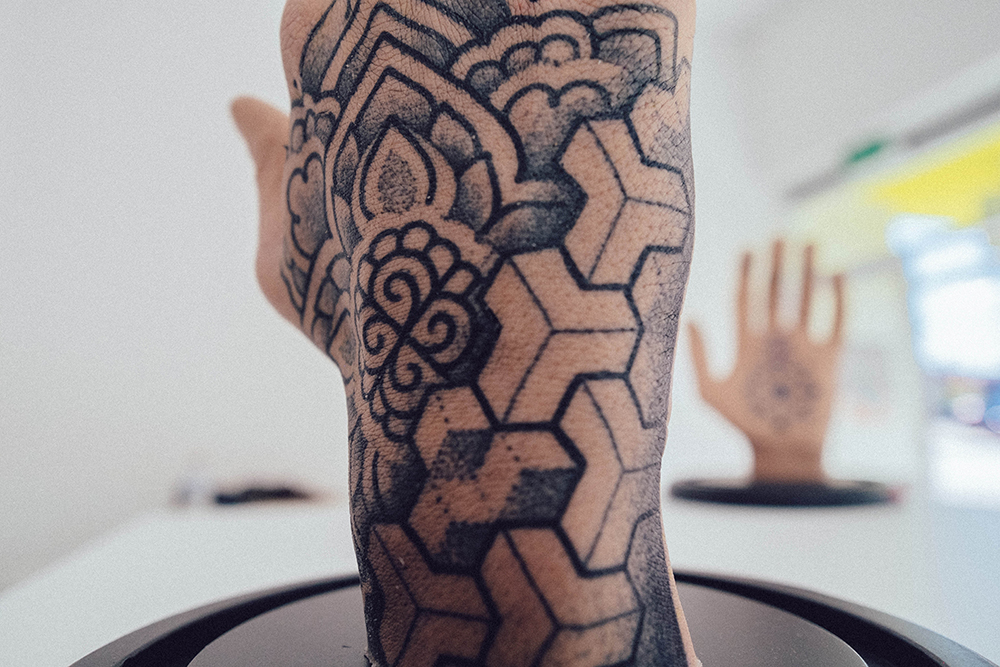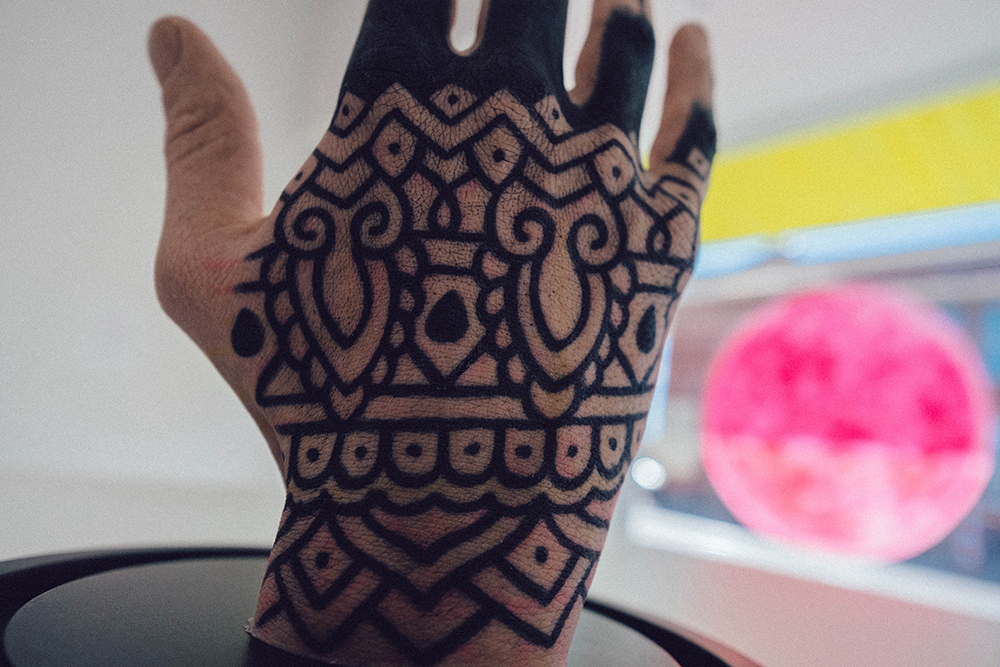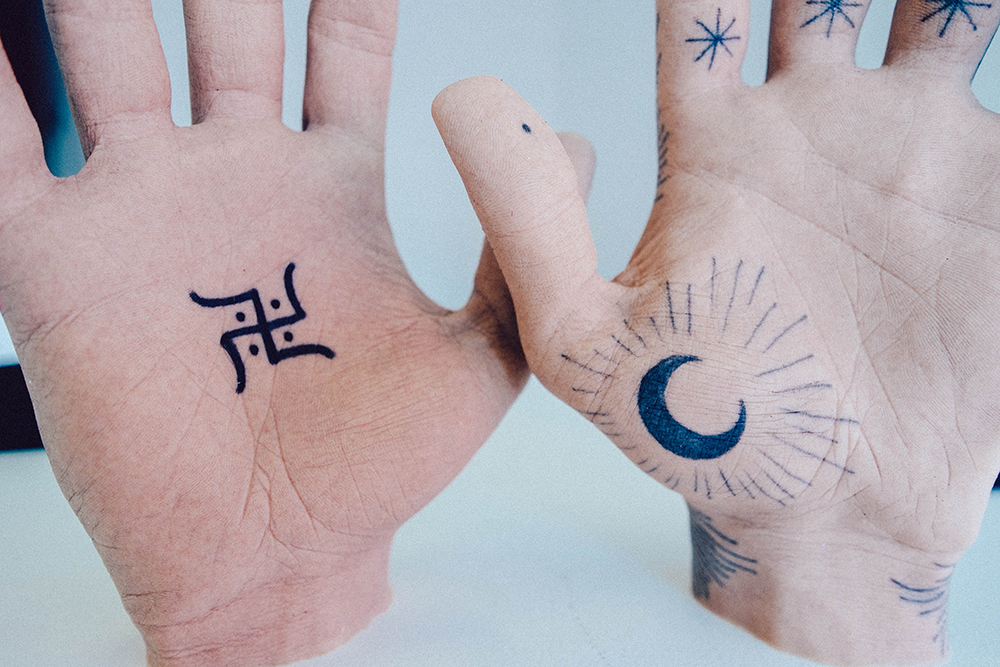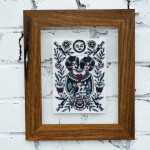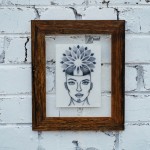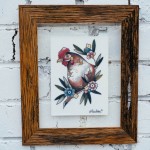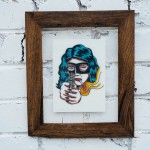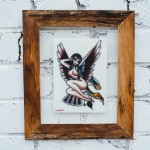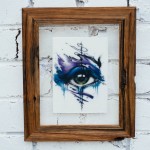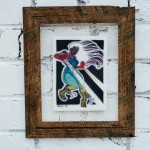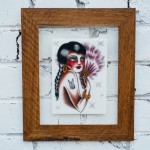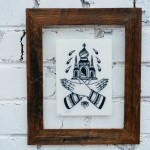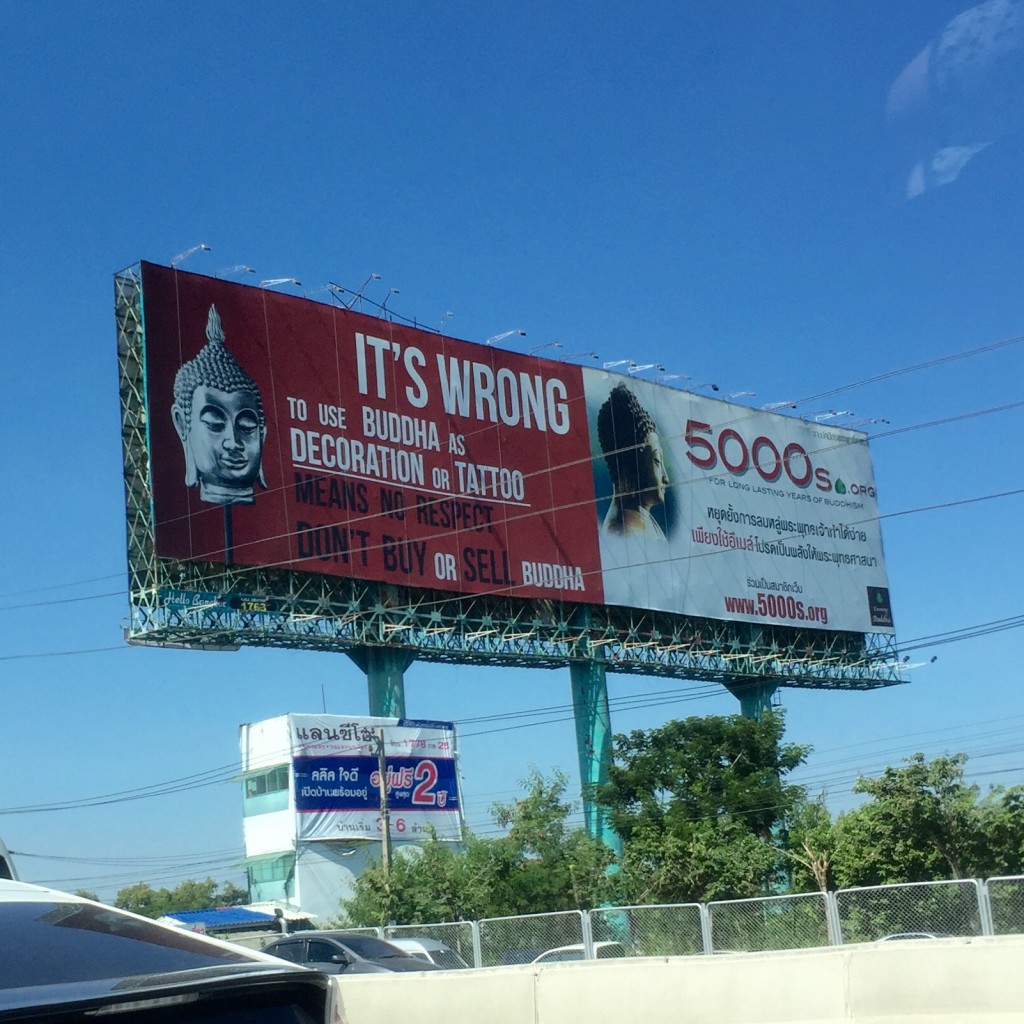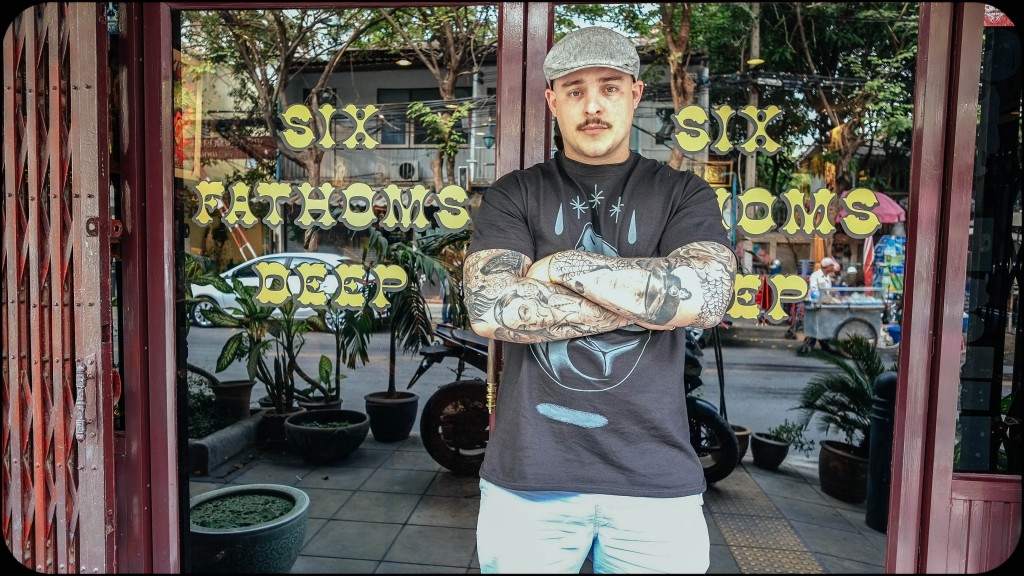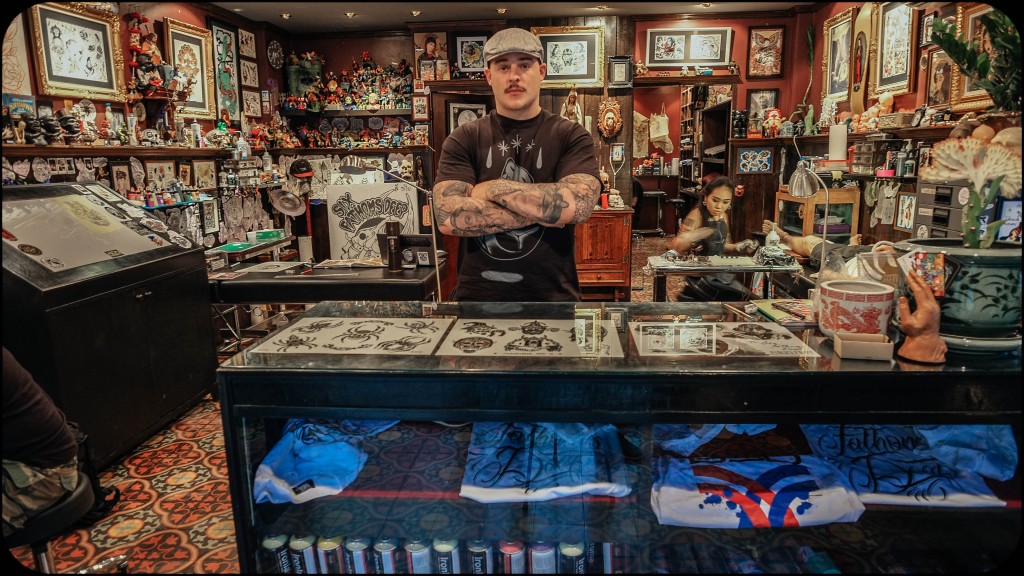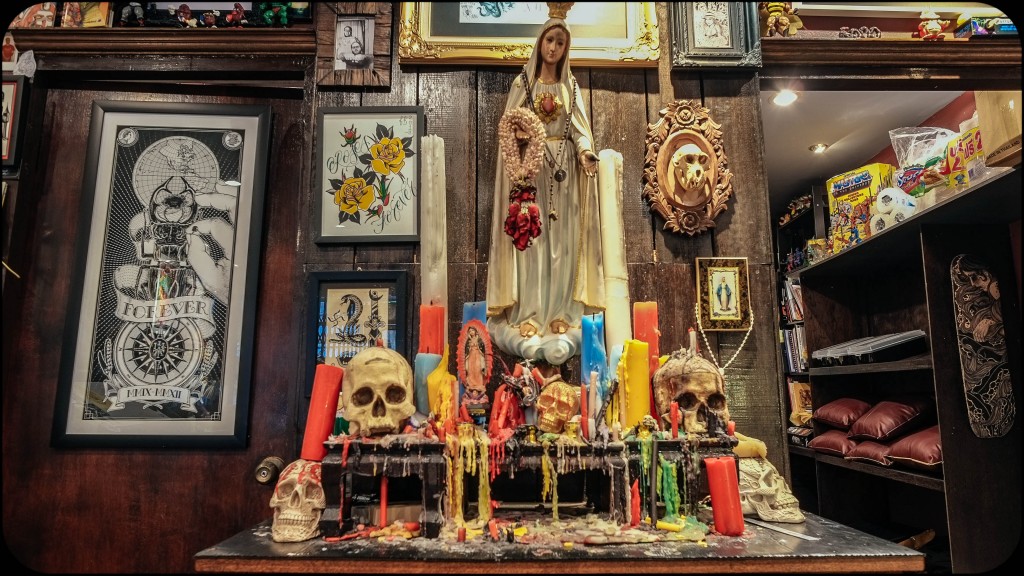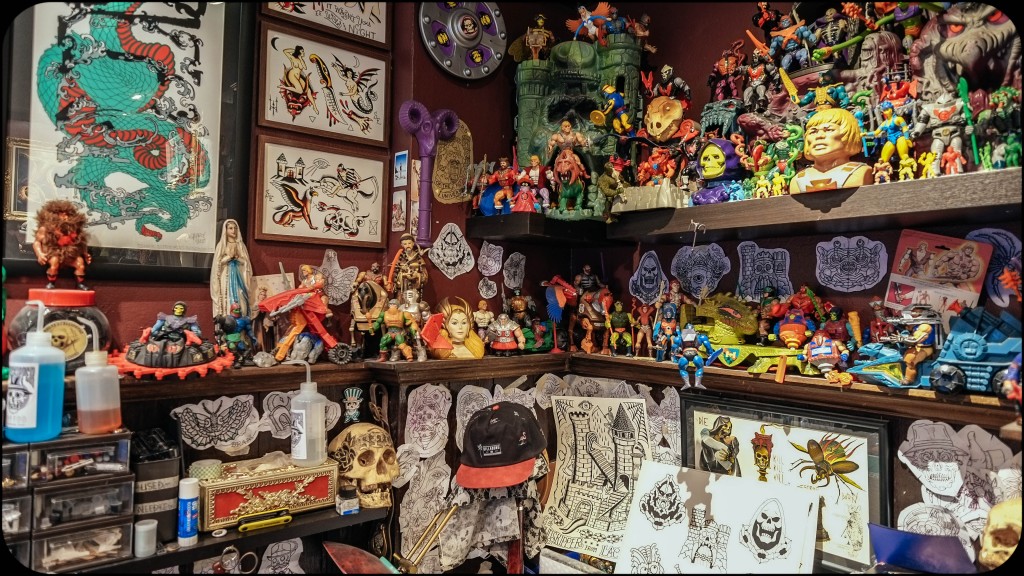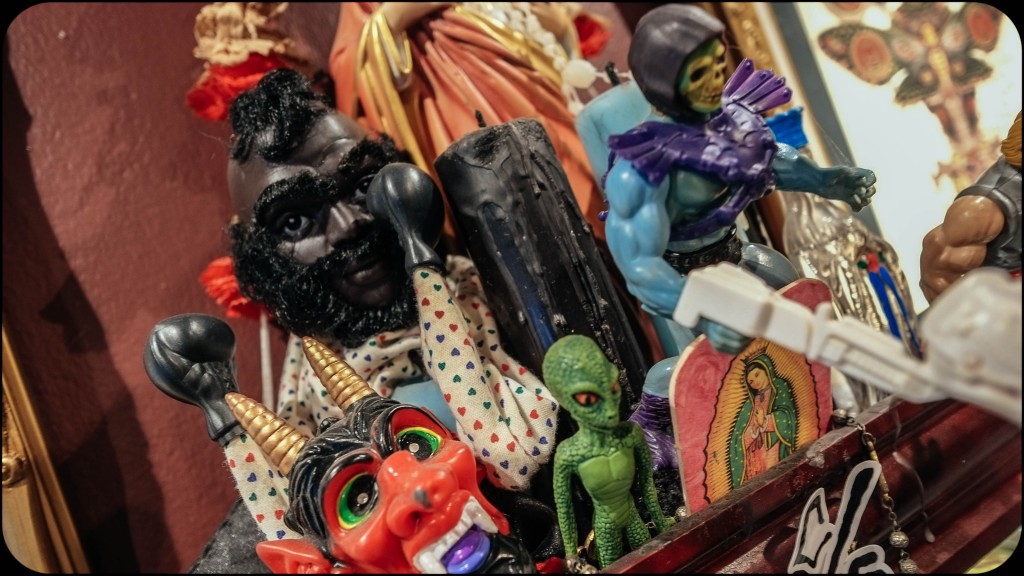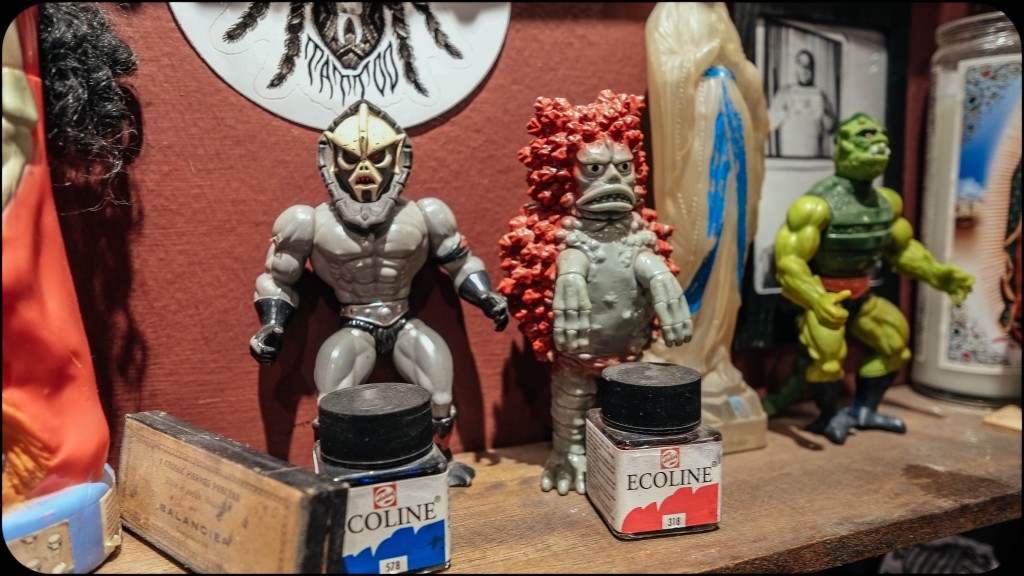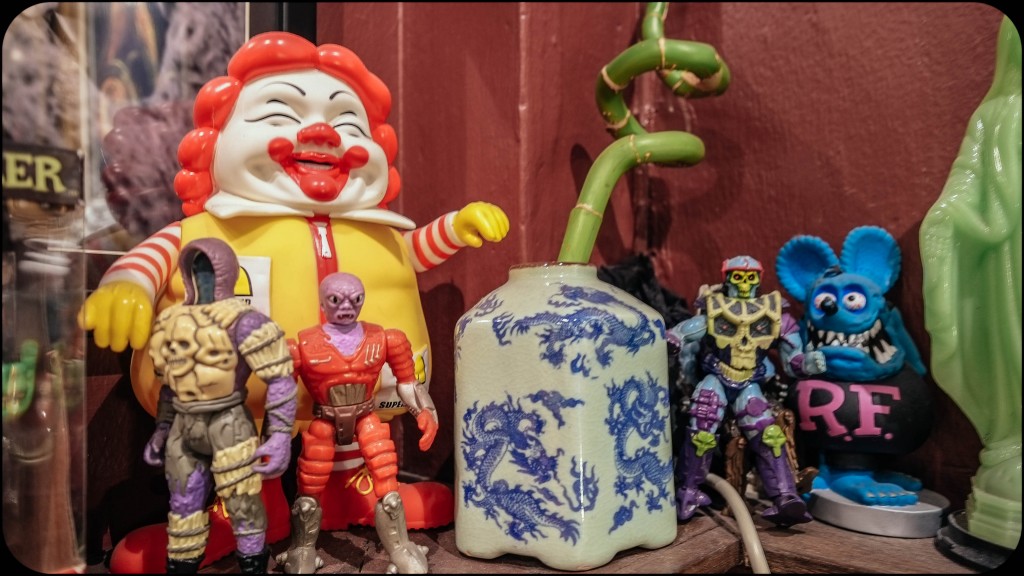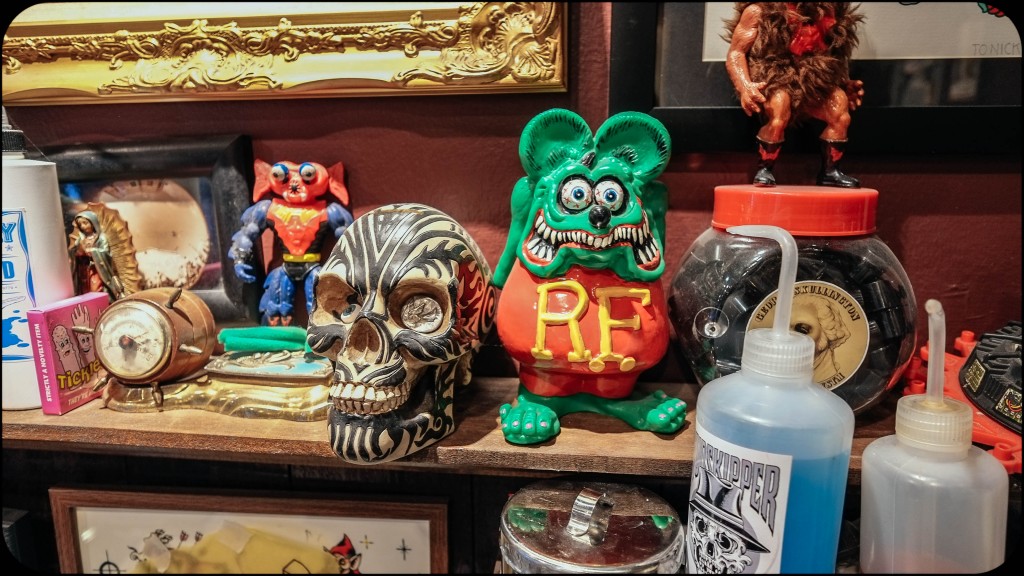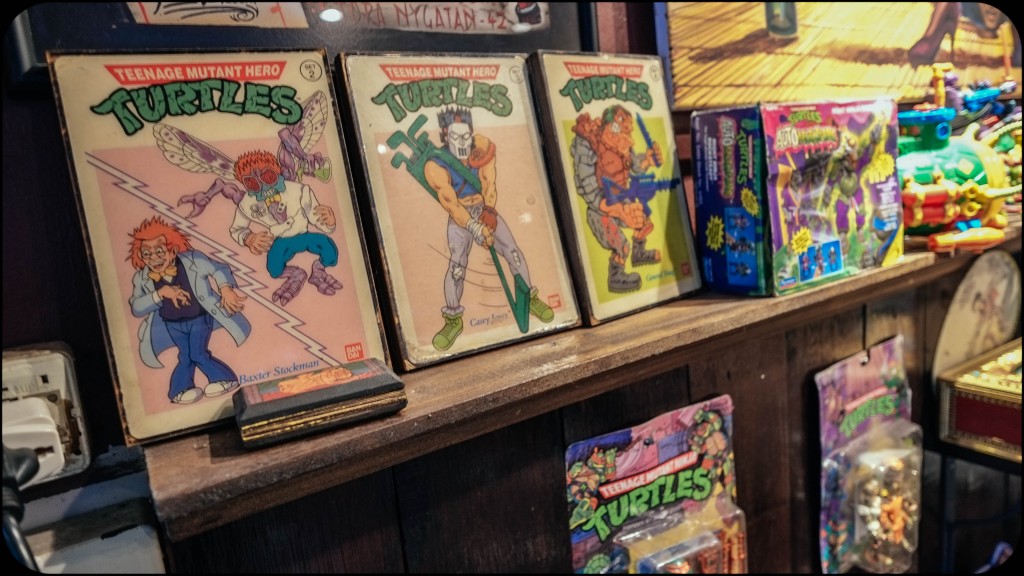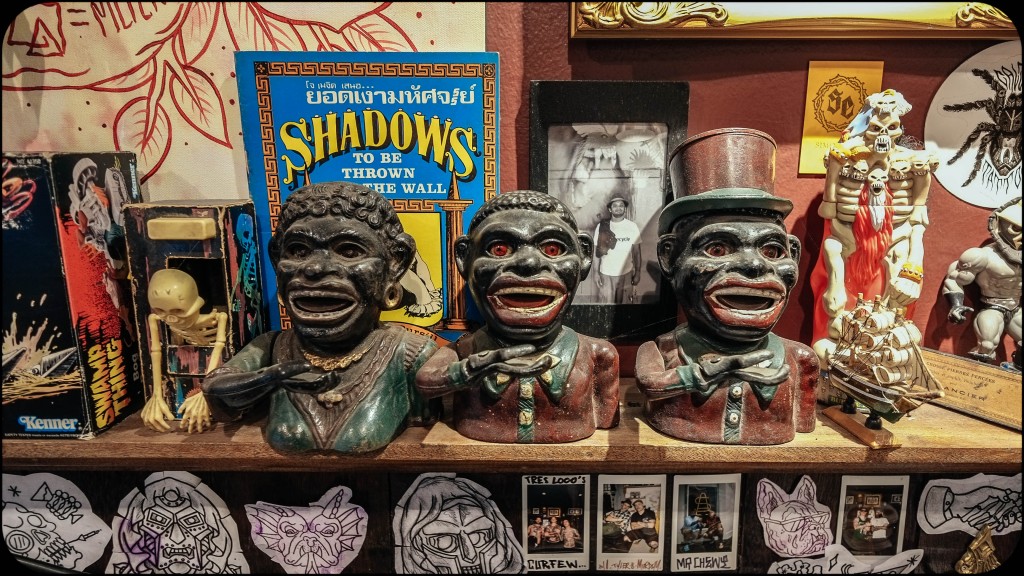By combining sacred geometry, erotica, and ethereal psychedelic visions, artist Jak Nola reveals a world as unique and capturing as her own appearance portrays. Swathed in layers of tattoo, her tongue bifurcation, tattooed eyes, and scarification render her own body an art work in progress.
While visiting Australia, she catches up with Fareed to talk about her art, tattoos, and how to go about attaining a free mind.
*this article contains a graphic image of a tongue bifurcation.
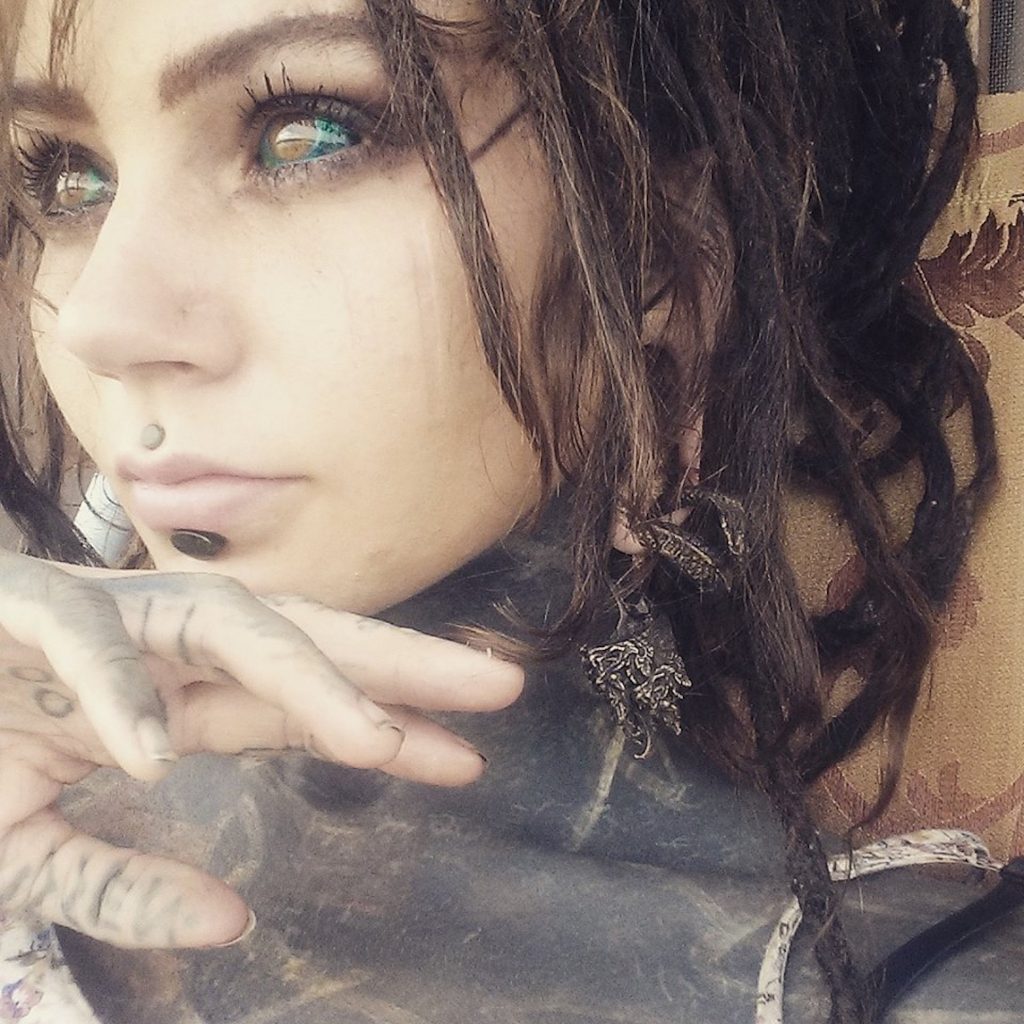
Hey, Jak. So, tell us about your life in New Zealand.
I was born in Napier, but I’ve lived all over the south and north island. Out of all the countries I’ve travelled to, New Zealand is by far the most beautiful; the lands here are powerful.
I’m a vegan that’s been creating art since I can remember. I have played guitar for about 16 years, so music is a huge part of my life. I only play for enjoyment though. I love building things, such as tables out of drift wood, anything out of old instruments, usually guitars. And I’ve also found a passion for creating jewellery.
So, my life is generally me doing all the above while traveling. I can never keep still, I love exploring new environments as much as I can, because I’ve found that new information stimulates my creative ideas profoundly.
What is the motivation behind your body modifications?
The motivation behind my body modifications… the human body in my eyes, in a sense, is a walking canvas, so I’d feel a fool to live this life without expressing my own in a way I find visually appealing.
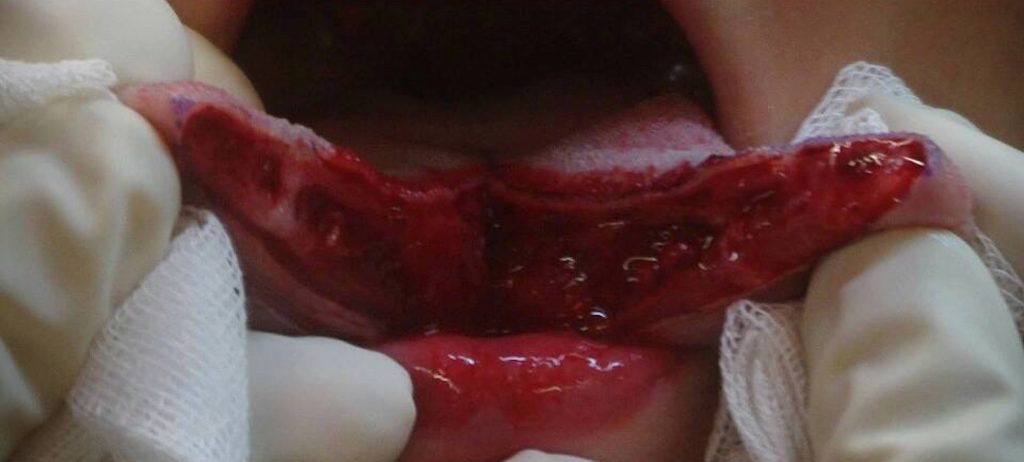
Because of your striking tattoos you’re subject to a lot of positive and negative appraisal through social media. What is that like?
It appears people who tend to write negative comments, are either just bored, dealing with their own issues, or heavily indoctrinated…it’s easy to attack people behind a screen, but most wouldn’t do it in person… so I don’t take any of it personally. As for the positive comments, I appreciate them immensely and take them gladly to heart.
Okay, so, let’s break this down, can we can safely say you’re currently in a third permutation of a body suit?
Yup roughly third one, some areas less, some more. I started with traditional Celtic/tribal, all except one a design of my own, all terrible though! But that’s all part of it, I learnt, as with everything. Then eventually I gained a body suit and modifications rather fast, still not how I wanted to express myself. So now I’m in the process of covering everything, with a full body concept of blacks, whites and scars. A process that will take a lot of time and endurance but it’s a true vision of my body, for myself.
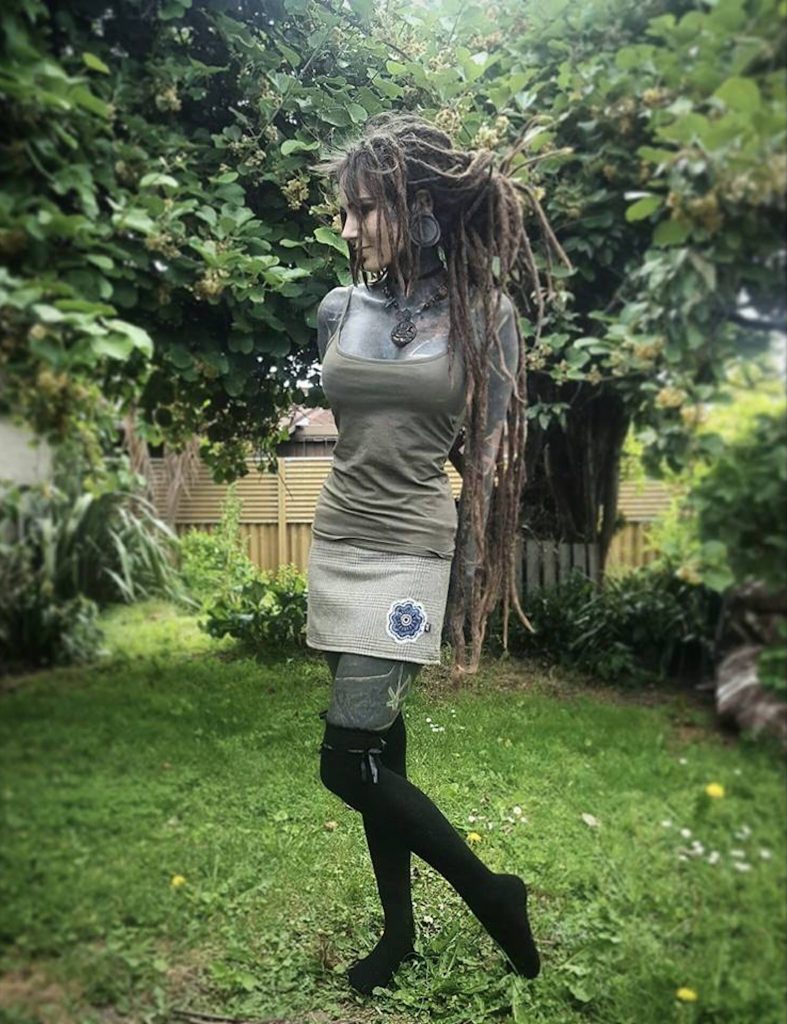
One thing that will stay will be my full back piece, from the top of my neck down to my ankle it says “Maybe Logic”, which is from my most influential author, Robert Anton Wilson. His words have inspired this idea of reality being perceived more in an ambiguous sense, which for me is far more fun and confusing. I think to be subjected to one ideal obviously limits the mind’s exploration of its experiences.
In saying that, I do enjoy the idea of there being a “truth” to this whole experience, but I’d imagine it to be something we couldn’t conjure up with the instrument we have for processing (human brain). Maybe. Plus, being stuck in a linguistic construct doesn’t help that exploration anyway. Many writings as such, along with psychedelics, have heavily influenced my creations.
In what way?
Pure psychedelics have widened my perceptions, given new ideas, understandings and depths to my creative expressions. I take them with respect, they are not something I would abuse. Through psychedelics I learn, love, laugh and just enjoy life as I usually do but in new ways.
And while we’re on that topic, you create art on many mediums, such as painting, jewellery and tattoos, could you tell me about each?
I’ve drawn since I was very young, along with playing music. I’m self-taught in almost everything I do. My art has transformed immensely over the years due to life experiences and psychedelics. Generally, it’s a combination of geometry and sacred symbols, or sex… as I have a passionate love/hate for it. I’m aware of the immense positive and negative aspects to it.
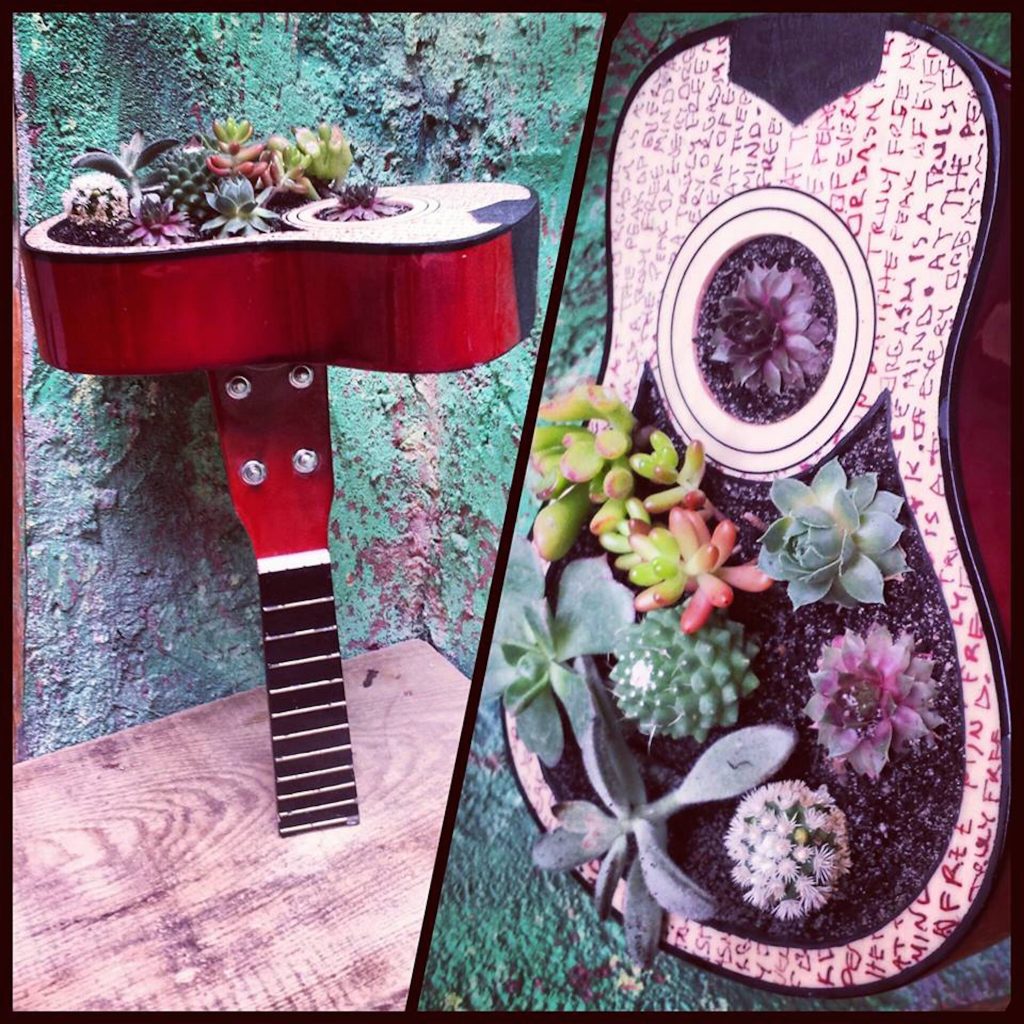
I started teaching myself tattooing around the age of 15, but over the years I have learnt different techniques with different artists around the world which I am grateful for. Most of my art is done on a thick paper because its best for me to travel with. I’ve been trying to do art on a canvas over the last few years but it’s much more difficult for me, it’s always worth it once I’ve finished though.
I’ve been making jewellery for a few years now, usually when I’m traveling I’ll find precious gems or pendants and make something with them. It’s very therapeutic.
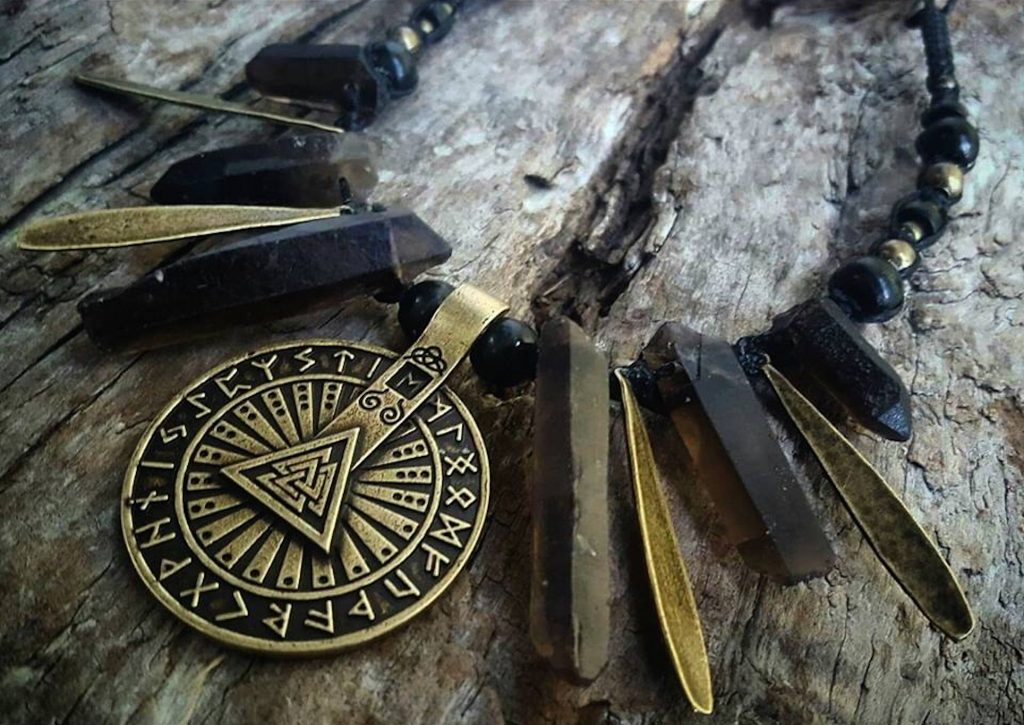
With my tattoos, I like to somewhat connect with the person, and I only do tattoos that I enjoy doing. In my mind, it’s an art form, not work. I love doing mandalas and geometric designs with dots. Although I’m always keen to learn new ways of tattooing, so I have no idea where that path will take me
Written on one of your paintings is ‘At the peak of every orgasm is a truly free mind.’ Could you elaborate on this?
I’ve written this in a lot of my art, it’s one of the truest statements in my mind. When you reach the peak of an orgasm, there’s no stress, no frantic thoughts, no worries, it’s just you and that peak of bliss. A free mind from all of life’s daily, cluttered thoughts.
instagram : jak_nola
facebook : facebook.com/jak.art.nz
online store : www.etsy.com/shop.jaknola
